|
Donna on the Side - The Meet Scene:
|
|||||||||||||||||||||||||||||||||||||||||||
The Adidas Outdoor Track & Field Championships is held in an area rich in history. Today, the Raleigh-Durham, North Carolina area is a major center for business and technology. But in the19th century it was the heart of a world-wide tobacco empire. Today, smoking is banned in most public places, today. But not so in the past. Tobacco was a very important comodity in the history of North Carolina. So important was it in colonial times that it was used as currency. During the 19th century however, it really had a tremendous influence on North Carolina's economy, development and role in many industries.. Many of the cities in the state owe their development to tobacco as profits from tobacco were invested in land and fast growing southern industires such as electric power and textiles. Tobacco money was also used for humanitarian causes as well including establishment of Duke University. Tobacco as a consumer oriented comoditiy started on Duke Homestead near Durham. There, tobacco was tranformed and marketed into cigarettes and a world wide industry. In 1865, after returning from the Civil War, Washington Duke, an Orange County farmer began making smoking tobacco in a small hut. Later, James "Buck" Duke, Washington's son, founded the American Tobacco Company and Duke Power and endowed Duke University. The Dukes were also instrumental in extending their influence and money to textiles, hydroelectric power and philandrophy. A Tobacco Tidbit: |
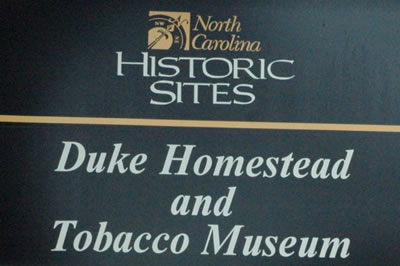 |
|
| The indians introduced the explorers and early settlers to tobacco. Explorers brought it back to Europe where it was met with mixed reviews. | |
 |
|
| From the beginning, many thought tobacco use was a vile, smelly habit. | |
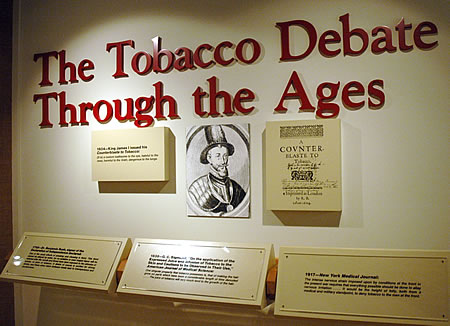 |
|
 |
The mighty tobacco plant. |
 |
|
 |
|
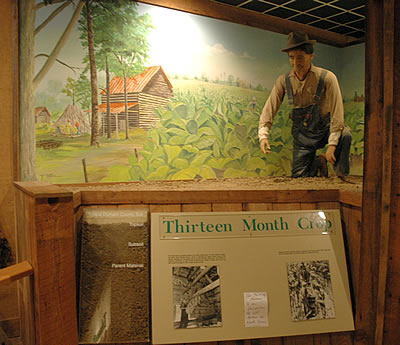 |
|
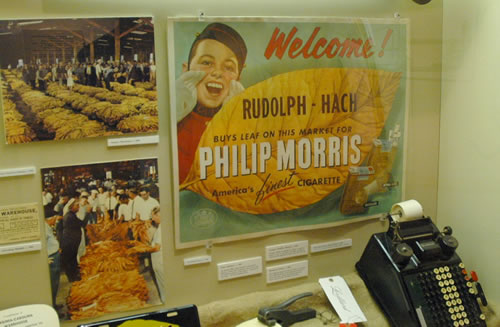 |
|
| Tobacco was very important to the troops in both World War I and II. It was considered necessary to keep up the morale of the troops. | |
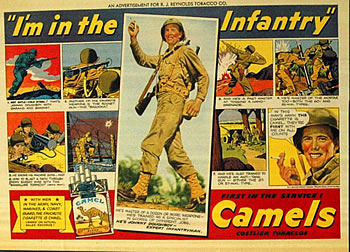 |
|
The auction was a day long event with entertainment and food served outside the auction building. |
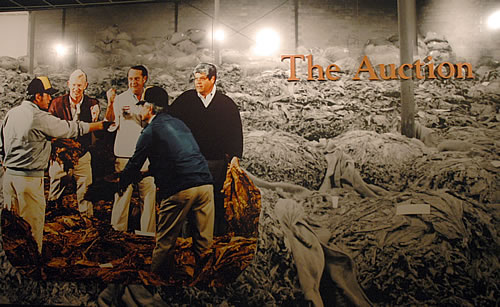 |
Great care was taken to make cigarettes. |
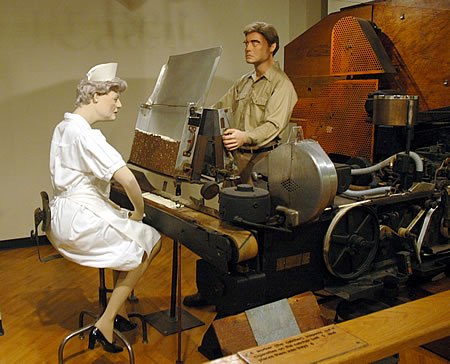 |
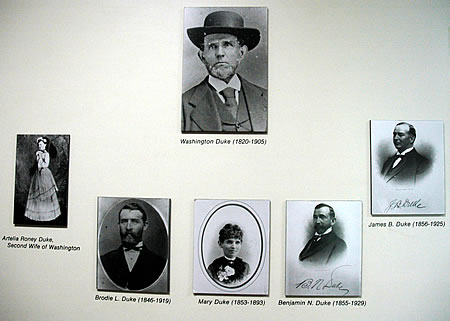 |
|
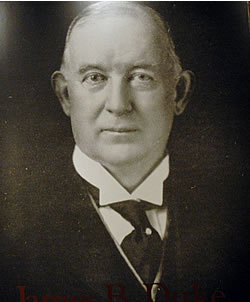 |
James "Buck" Duke- Buck Duke was one of the sons responsible for expanding the business. Buck began his career in his father's company, W. Duke & Sons, and beame a partner at the age of 18. In 1890 he formed the giant American Tobacco Company by a mergerof the five largest cigarette manufacturers. He had great marketing and organizationals which were insturmental in building the American Tobacco into a huge business. |
The ancestral homestead with house, barn and buildings |
|
 |
|
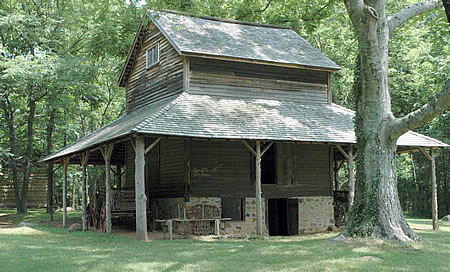 |
|
Naturally, you'll find a tobacco plant growing in the garden. |
|
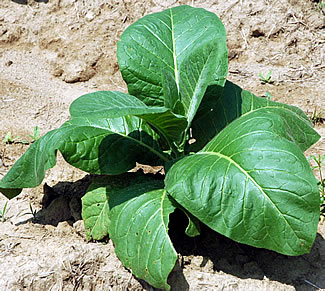 |
|
DyeStat ©1998-2004 |
 |